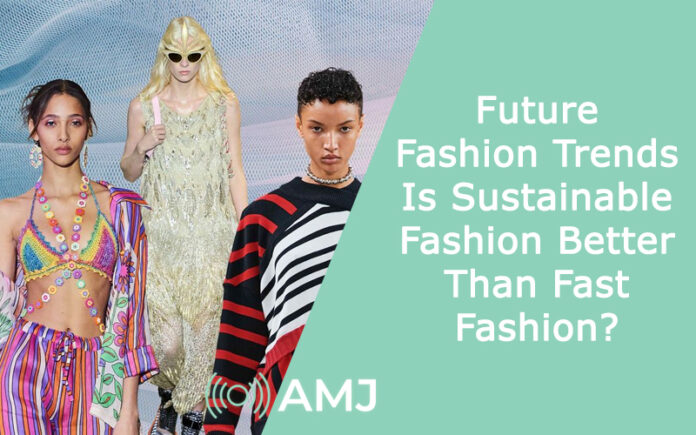In this post-pandemic world, the economy is suffering high inflation rates, making it essential to prioritise local economies instead of relying on imported products. The sustainable fashion industry has been the first to champion this transformation by implementing a business model that ensures ethical and responsible manufacturing, unlike its mainstream fast fashion counterpart.
The State Of Fashion 2023 report by McKinsey & Company mentions that the fashion industry is responsible for 10% of global carbon emissions and that the industry’s water consumption is expected to increase 50% by 2030, signaling an urgent need for change in the fashion industry to control its environmental impact.
Fast fashion continues to produce low-cost clothing in large quantities to meet the demands of high-frequency purchasing resulting in low quality products. Sustainable fashion brands only use materials that are environmentally friendly, such as organic cotton, recycled fibres, and natural dyes to ensure that the clothing is durable, timeless, and can be worn for years, rather than encouraging frequent and disposable purchases.
The modern consumer has transformed into a green consumer who is highly aware of these demand and supply trends choosing to purchase sustainable fashion clothing as a direct way to protect the future of natural environments.
How To Create A Truly Sustainable Fashion Industry
The issue of overconsumption and fast fashion remains a problem that can only be resolved by building truly sustainable fashion brands such as Stella McCartney, Levi’s, Patagonia, Reformation and Everlane. There has been a surge in the number of independent sustainable fashion brands and products available in the market.
The Fashion Pact is a global initiative launched in August 2019 by French President Emmanuel Macron, in collaboration with François-Henri Pinault, Chairman and CEO of Kering, a luxury fashion conglomerate. The aim of the pact was to promote sustainability in the fashion industry, which is now considered to be one of the largest and most polluting industries in the world. Major fashion companies signed the Fashion Pact to address climate, biodiversity, and ocean pollution due to large-scale manufacturing.
The pact currently has over 60 signatories, including brands such as Adidas, Burberry, Chanel, H&M, Nike, Prada, and Zara. While the Fashion Pact was a positive step towards promoting sustainability in the fashion industry, it is only a voluntary initiative that does not address issues faced by smaller and independent fashion brands.
Online shopping has created the perfect opportunity for sustainable fashion brands to be easily discovered by green consumers. Eliminating the need for establishing brick-and-mortar outlets, sustainable fashion brands can now use online platforms to promote their products to millions of consumers. In the future, platforms that support such causes can feature sustainability ratings for various product listings that help them make informed decisions that align with their environmental values. prislo.com
The Role Of Social Commerce In Sustainable Fashion
According to Oberlo, there are 4.89 billion social media users worldwide in 2023 indicating a 6.5% increase from 2022. The report shared that an increase of 2.2 billion users has been recorded since 2017 showing a jump of 79.1% in the last five years. With an average annual growth rate of 10.2%, sustainable fashion brands can utilise the power of growth attributed to social commerce to increase their sales.
People are spending more and more time on social media applications such as TikTok, Instagram, Snapchat and Facebook which constantly shape the future trends of online shopping. Marketing campaigns can not rely on typical strategies of using billboards, TV and Radio to reach consumers.
Social commerce offers innovative marketing strategies for sustainable brands such as partnering with influencers to target green consumers on social media. Building a loyal customer base that shares the same values as the brand is critical in creating long-lasting relationships and securing returning customers. The latest shopping features offered on social media platforms make it incredibly easy to purchase products directly from advertisements and posts.
As per Statista, social commerce generated $475 billion in sales in 2020 and will generate $3.37 trillion by 2028, growing at a 28.4% annual pace. Social Commerce is the fastest way to reach new customers and boost sales, 43% of consumers look for more information about brands, products, or services through social networks (GWI). This indicates the growing influence of social media buying and selling products as a part of their daily routine.
Sustainable fashion has a growing community online that generates conversations, discussion and information exchanges daily that acts of brand awareness to reach new consumers. This kind of community-based marketing transcends trending topics and typical marketing formulas that use brand aesthetics as their only baseline of communication.
Consumers are looking to feel represented and think of their fashion choices as part of their social identity which has been the catalyst for creating more inclusive, socially conscious and truly sustainable fashion brands. A study by the Harvard Business Review found that customers who engage with companies on social media spend 20-40% more money with those companies than other customers. These engagement trends show that the future of sustainable fashion depends on the level of interaction it has with its consumers.











![Index of Money Heist [Season 1, 2, 3 & 4 – All Episodes, Cast and Plot] Index of Money Heist](https://www.asiamediajournal.com/wp-content/uploads/2021/05/Index-of-Money-Heist-3-100x70.jpg)
